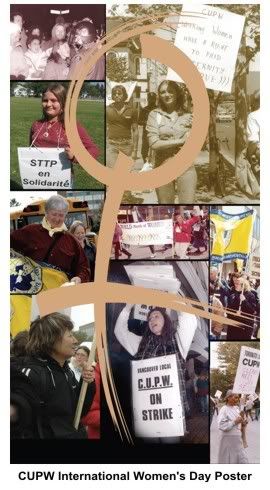Media, race, and Hirji murder
 The recent slaying of Surrey school principal Shemina Hirji inside her Burnaby home on July 5 comes on the heels of recent high-profile killings of female spouses in the community. (She was killed just five days after marrying Narinder Cheema).
The recent slaying of Surrey school principal Shemina Hirji inside her Burnaby home on July 5 comes on the heels of recent high-profile killings of female spouses in the community. (She was killed just five days after marrying Narinder Cheema).
"Cultural explanations keep coming up because they're easy,"Vancouver-trained academic Yasmin Jiwani said. "If you already have a stereotype in the background, the moment you see something you say, 'Ah this is an oppressive culture.'"
But it isn't always the case that the "dominant media", according to Jiwani, uses "definitions of culture" in explaining violence perpetrated against members of the South Asian community.
In Jiwani's 2006 book Discourses of Denial: Mediations of Race, Gender, and Violence (UBC Press sample chapter), she juxtaposed the Reena Virk murder in Victoria in 1997 with the 1996 Vernon massacre. Two people instrumental in Virk's fatal swarming were white. The Vernon case involved the shooting death of Rajwar Gakhal and eight of her relatives by her estranged husband, Mark Chahal.
"In the case of the Vernon tragedy, the cultural signifiers used throughout the reportage clearly position the murders as arising from a cultural practice of arranged marriages and women's supposedly subordinate status within the Sikh religious tradition," Jiwani wrote.
"The analysis of the murder of Reena Virk, however, points out how a cultural explanation is explicitly avoided in order to divert attention from issues of racism and the consequences of racialized difference, and to privilege a definition of the situation as emerging from girl violence and bullying."
In her book, Jiwani noted that these two cases "show how race is conveniently erased when it suits the public imagination and the media's agenda, and conversely, invoked in a culturalized form (to the exclusion of almost all else) when deemed necessary".
"Hence, the killing of Reena Virk is framed as a generic girl gang violence phenomenon, while the Vernon murders are attributed to a culturally specific ethnic phenomenon," she wrote.
When Hirji's killing became public, the community paper Indo-Canadian Voice reported that it's "just the kind of news that Indo-Canadians dread". In a follow-up report, outspoken editor Rattan Mall wrote that with the subsequent discovery of court documents detailing the violent past of Hirji's husband, "there was shock and anger in the community as the case only seemed to reinforce the stereotyping of Indo-Canadian males".
Indira Prahst, a sociology instructor at Langara College and a friend of the Cheema family, told the Straight that although media reportage of domestic violence is warranted, "sensationalized angles" aren't. "If we have a predator that is brown, the word South Asian or Indo-Canadian becomes very highlighted," she explained. "Framing violence against women as being inherent in the South Asian culture hinders us from understanding that the underlying cause of such violence is the culture of patriarchy."
Prahst said that patriarchy–the notion of male dominance–permeates other cultures as well. "If we had more mainstream media making that distinction, I think the South Asian community would be more comfortable in talking about the issue," she said.
Citing a 2006 StatsCan report, Measuring Violence Against Women, Prahst noted that visible-minority status does not raise the risk of spousal abuse. "In fact, the rates are lower: four percent for visible-minority groups compared to eight percent in other groups over a five-year period up to 2004," she said.
Violence against women crosses all demographic factors, according to Shashi Assanand, executive director of the Vancouver and Lower Mainland Multicultural Family Support Services. "It's a Canadian issue," Assanand told the Straight . "To say it's a South Asian culture is really not appropriate."
Visible-minority women report less abuse:
- Rates of spousal violence declined for visible-minority women between 1999 and 2004 in Canada, whereas they remained stable for other women.
- Rates of spousal violence in Canada are also lower for immigrant women and have declined slightly since 1999.
- There is no difference in the estimated rate of spousal violence for recent immigrants (who arrived in Canada since 1990) and longer-term immigrants.
- Visible-minority and immigrant women reported lower rates of emotional and psychological abuse compared with other women, and lower rates ofheavy drinking among spousal partners.
- Although visible-minority women do not report higher levels of spousal violence, they may have special needs related to the provision of interventions and services that are culturally and linguistically appropriate
Source: Measuring Violence Against Women: Statistical Trends 2006 , Statistics Canada.
LINK: Georgia StraightLINK: Sample Chapter: Discourses of Denial: Mediations of Race, Gender, and Violence










1 comment:
Although I may express some reservations toward stats, I still want to say that you do quite a good job by trying to bring nuances. When you speak about "racialization" (when "necessary") made by the media, I'm definitely sure that this is done non-white people. In fact, in Canada's mainstream media, I've noticed that "visible minorities" are always labelled as foreigners instead of real Canadian citizens.
Post a Comment